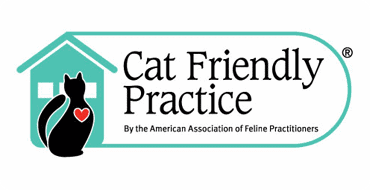Truman is a 7 year old neutered male boxer belonging to a wonderful family. He is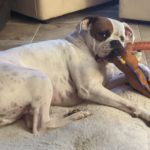
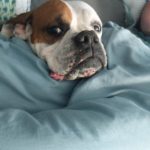
A few days later, Truman’s mom called to let us know that Truman had been reaching around the cone to lick at the incision site. There was still quite a bit of swelling, bruising, and drainage from the incision site. We modified his cone by taping two of the largest sizes together to extend their length and prevent Truman from bothering his knee. Truman was brought in for an exam and Dr. Sappington recommended microscopic cytology to look at the drainage under a microscope. A small sample of the fluid from the wound was applied to a glass slide and stained to help the bacteria become visible under the microscope. A shape of bacteria called cocci was seen as well as neutrophils, a type of white blood cells that fights infection. Truman was started on clavamox, an antibiotic that treats bacteria most commonly introduced to wounds by a dog’s mouth.
A week later, the incision site on Truman’s knee pulled apart. Dr. Sappington decided
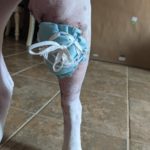
Six days after sending the bacteria sample to a lab for culturing, we received the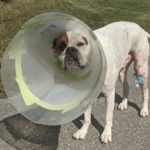

Finally, two months after the mass was removed and two weeks after he was started
Written by Robin


